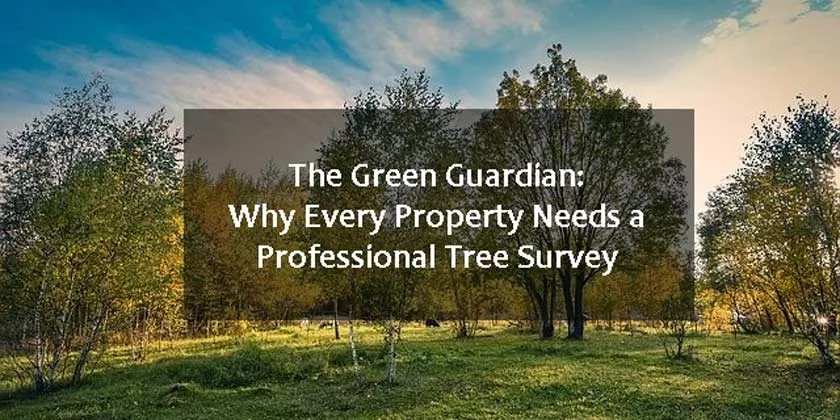When considering the health and safety of a property, many people focus on the structure itself, assessing the foundation, walls, and roofing for integrity.

The Green Guardian: Why Every Property Needs a Professional Tree Survey
However, the silent sentinels that can be either benefactors or potential threats to a property often go unnoticed – the trees.
A professional evaluation of these towering organisms is not just a formality; it’s a critical step in responsible property management. In the interest of preserving nature’s grandeur while ensuring the safety of built structures, a tree survey stands as an indispensable tool.
It acts as a voice for the trees, conveying their condition and needs to those who may not have the expertise to interpret the signs.
Understanding the Role of Trees in Environmental Equilibrium
Trees are more than just aesthetic enhancements to a landscape. They are dynamic ecosystems unto themselves, contributing to environmental balance by providing oxygen, improving air quality, and supporting wildlife.
They stabilise soil with their roots and combat urban heat with their canopies, making them indispensable to urban and rural habitats alike. Beyond this, they play a crucial role in conserving water, preventing erosion, and moderating climate conditions.
Assessing the Rewards of Arboreal Assets
In any landscape, trees may present both benefits and liabilities. Large, mature trees can add considerable value to property by enhancing its appeal and offering energy-saving shade that reduces cooling costs.
On the other hand, a poorly maintained or sickly tree might become a substantial liability, threatening to damage property or harm individuals if it falls.
Conversely, trees with structural issues can be liabilities, posing risks to property and personal safety. Diseased, damaged, or improperly situated trees can interfere with infrastructure, become hazards in severe weather, and invite legal complications.
The Integral Process of Professional Tree Analysis
The process of evaluating trees is multifaceted, involving an assessment of tree health, identification of species, age estimation, and risk evaluation. Experts analyse a tree’s structure, condition, and any potential disease or pest infestations that may impact its longevity and safety.
They can determine the potential for a tree to thrive or need for intervention, sometimes using sophisticated technology to peek into a tree’s future. They also consider the regulatory framework, as many regions have strict guidelines regarding tree protection and property development.
Economic Implications of Tree Management
While the upfront cost of a professional assessment may be a consideration for some, the economic implications of effective tree management are far-reaching.
Well-maintained trees can significantly increase property value, while the cost of removing a fallen tree or repairing damage after a storm can be substantial. Investing in trees can also have direct economic benefits, such as reducing the need for stormwater management systems through natural absorption.
Proactive tree care, guided by a thorough inspection, can mitigate these potential expenses and contribute to the property’s overall financial prudence.
Long-term Conservation and Care Strategies
After a tree assessment, long-term care strategies become clearer and more targeted. This can include pruning to promote health and stability, removal of trees when necessary, and guidance on planting new trees in appropriate locations to avoid future conflicts with infrastructure.
Strategic planning for tree placement and maintenance based on an assessment can enhance aesthetic appeal while promoting biodiversity.
By establishing a long-term plan for tree care, property owners can enhance the lifespan of their trees and contribute to a healthier, safer community for years to come.
Conclusion
A professional tree survey is not just another item on a property maintenance checklist; it is a crucial investment in the longevity and safety of both the property and its natural surroundings.
Such surveys serve as preventive health care for trees, often saving considerable time and resources that might otherwise be spent on emergency situations.
By committing to regular evaluations, property owners take an active role in stewardship of the land, embracing a partnership with nature that prioritises the well-being of their environment as much as their personal or commercial interests.
